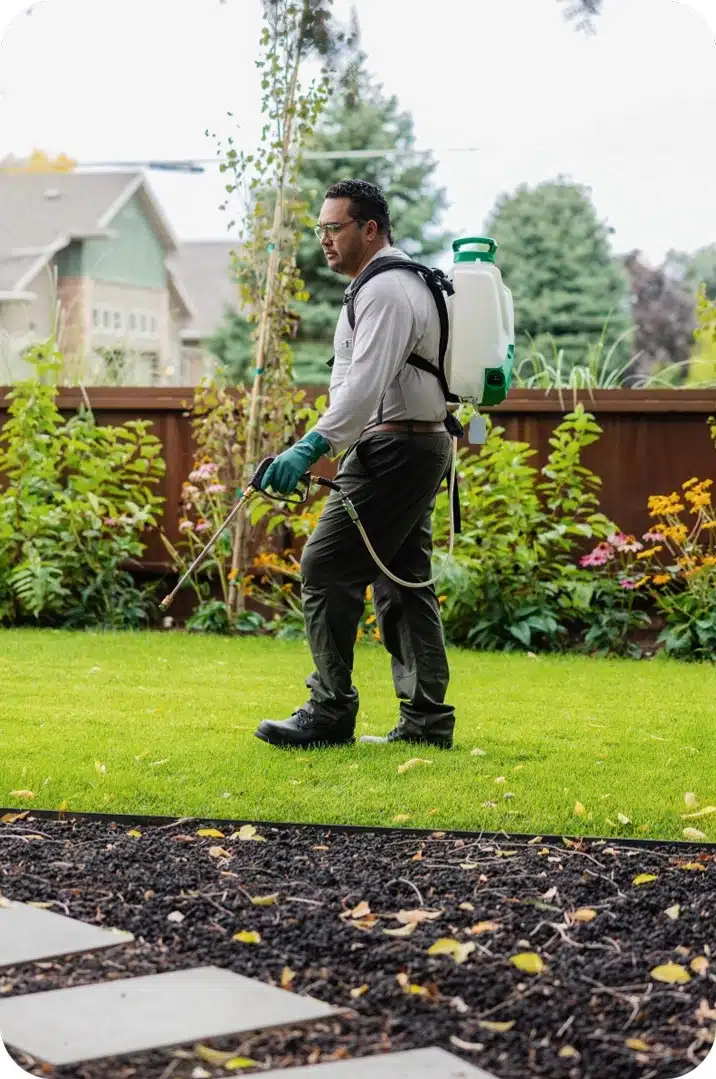Bed Pest Treatment Breakdown: Contrasting Chemical Vs. Non-Chemical Solutions
In the realm of insect control, particularly when handling the consistent issue of bed bugs, the option between chemical and non-chemical therapy solutions can be a crucial one. Both techniques offer distinct advantages and drawbacks, affecting elements such as effectiveness, security factors to consider, and general expense. By analyzing the nuanced information of each approach, a clearer understanding of which path to seek in resolving a bed insect invasion can be attained.
Effectiveness of Chemical Therapies
Chemical therapies for bed bug problems have actually been extensively identified for their potent and fast effectiveness in eliminating these bugs. When thinking about the efficiency of chemical therapies, it is important to recognize that they can provide a fast and complete remedy to a bed bug trouble. Expert pest control men usually count on pesticides to target bed insects at different stages of their life process, consisting of nymphs, eggs, and grownups. These chemicals normally function by interrupting the bed pests' nerve system, bring about paralysis and eventual death.
Additionally, chemical therapies have the benefit of supplying residual impacts, implying that they can remain to get rid of bed bugs also after the first application. This recurring action is especially useful in combating any type of potential re-infestations. In addition, the rapid activity of chemical treatments can bring alleviation to individuals dealing with serious bed insect invasions, permitting them to regain control of their home rapidly.
Safety And Security Worry About Chemical Solutions
One critical aspect that needs careful factor to consider when using chemical solutions for bed pest therapy is ensuring the safety of passengers and the atmosphere. While chemical therapies can be effective in getting rid of bed pests, they may posture dangers if not taken care of correctly. One of the main security concerns with chemical remedies is the potential damage they can cause to human wellness. Direct exposure to specific chemicals made use of in bed pest therapies can cause breathing issues, skin irritation, or other negative responses, particularly in people with pre-existing conditions or sensitivities. In addition, improper application or dosage of chemical pesticides can cause poisonous residues sticking around in the treated area, posing long-term wellness dangers to occupants.
Additionally, the ecological impact of chemical services is one more significant factor to consider. Some chemicals utilized in bed insect treatments may be damaging to advantageous pests, wild animals, and ecological communities if they seep right into the dirt or water supply. It is vital to utilize chemical treatments carefully, complying with safety guidelines, and considering much less hazardous alternatives to alleviate these dangers and ensure the reliable and risk-free management of bed insect problems.
Advantages of Non-Chemical Approaches
Thinking about the potential security problems and environmental impact connected with chemical solutions for bed insect treatment, discovering non-chemical strategies provides an encouraging alternative with numerous distinctive advantages. Non-chemical techniques offer a safer choice for houses, especially those with children, individuals, or animals delicate to severe chemicals. These strategies remove the dangers of exposure to harmful substances, minimizing the potential for unfavorable health and wellness impacts. Additionally, non-chemical therapies are eco-friendly, as they do not contribute to air or water pollution, making them a lasting selection for pest control.
In addition, non-chemical remedies can be reliable in targeting bed bugs, including hard-to-reach areas where chemical treatments may not permeate. Techniques such as heat therapy, vacuuming, steam cleaning, and mattress encasements give comprehensive removal without using damaging chemicals. Furthermore, non-chemical techniques can be much less turbulent, requiring marginal preparation and enabling quicker reentry right into dealt with locations. On the whole, deciding for non-chemical bed pest therapy methods not only prioritizes security and environmental management however additionally ensures efficient and comprehensive parasite control.
Limitations of Non-Chemical Treatments

Additionally, non-chemical treatments often require multiple applications to accomplish effective elimination. This can be time-consuming and A1 bed bug exterminator charlotte might not constantly ensure full removal of all bed bugs and their eggs, specifically in concealed or hard-to-reach places.
Furthermore, the success of non-chemical treatments heavily counts on correct application and thoroughness, which can be testing for people without expert competence. Insufficient application of non-chemical approaches may cause insufficient obliteration, resulting in persistent invasions and the requirement for added treatments.
As a result, while non-chemical treatments have their benefits, it is important to acknowledge these constraints and consider them when establishing one of the most reliable technique for taking care of bed pest invasions.
Expense Comparison: Chemical Vs. Non-Chemical Options
Given the limitations associated with non-chemical therapies, a vital element to evaluate in the context of bed insect monitoring is the expense comparison between chemical and non-chemical alternatives. In comparison, non-chemical therapies like heat treatment or vapor can be more costly, with costs varying from $1,000 to $6,000 for a whole home. While the first cost of chemical therapies might seem lower, multiple treatments may be called for to completely eliminate the problem, potentially enhancing the overall expense.
Conclusion

Considering the prospective safety worries and environmental effect connected with chemical remedies for bed bug therapy, exploring non-chemical approaches provides a promising option with numerous unique benefits.Given the constraints connected with non-chemical therapies, a crucial facet to evaluate in the context of bed insect management is the expense comparison between chemical and non-chemical options. In comparison, non-chemical treatments like heat therapy or steam can be extra costly, with prices ranging from $1,000 to $6,000 for an entire home. While the first expense of chemical therapies might seem reduced, several treatments might be required to fully remove the infestation, possibly raising the general cost.In verdict, when comparing chemical and non-chemical bed bug treatment alternatives, it is important to take into consideration efficiency, safety, advantages, limitations, and price.
Comments on “A1 Bed Bug Exterminator Charlotte - Efficient and Affordable Services”